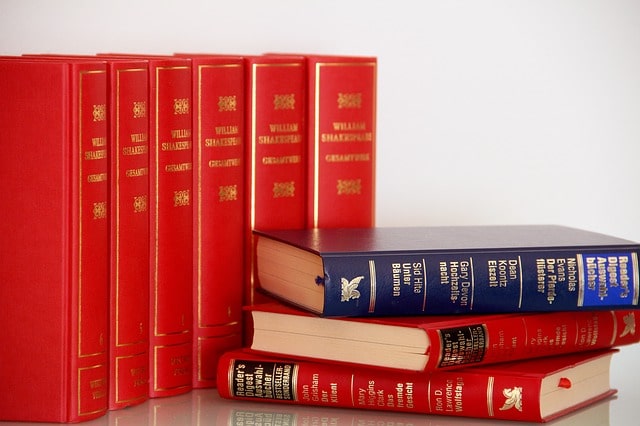Normative text: what it is, characteristics, types and how to draft a normative text
Contents
What is a normative text?
This type of text includes all texts that contain rules or instructions that indicate how to carry out a specific process. In general, the normative text indicates how to act in a certain place or situation. It is addressed to any person, which is why its function is appealing and it must take care of its language, making sure that the reader can understand it easily and quickly.

Within the normative texts we find several formats, including operating rules, rules of conduct or behavior, regulations, manuals, conditions of participation in a specific activity, instructions for the operation of electrical devices or appliances, cooking recipes, among others.
Most important characteristics of normative texts
Let’s move on to see the most important features of this type of texts, in this way it will be much easier to identify its most punctual aspects to differentiate it from other types of non-literary texts. Let’s see:
Importance of clarity
The central axis of this type of texts consists in taking good care of the clarity of the messages, ideas or content that is transmitted. This is because it is necessary that each of the instructions is as well expressed as possible, the information must be clear and concise so that there is no room for ambiguity or doubt in the process while the reader has the text.
Function of these texts
Often the normative text is used to determine the order of a series of procedures or aspects, which is why it is possible to identify a large number of texts following the practical function of each of them. In this sense, they are addressed to a specific reader to indicate how to act in a given space or situation and thus achieve a result.
Organization of information
Another important aspect of this type of text has to do with the way in which the information is organized, since it is a series of indications, it is very important that these are presented in a sequential or step-by-step manner so that the final reader can progressively reach the expected result.
Incorporation of images or illustrations
Normative texts often include diagrams to support the information in order to make it easier for readers to follow. In addition to this, illustrations or images may also be added that readers can use to better understand the message or content presented in the text.
Structure of the normative text
Although although the possibilities can always vary when we talk about this type of text, in particular, given the wide variety of areas in which it can be implemented and the purposes to which it can be directed, there are two key elements that must be present in its use. Thus, we find the following:
Title of the text
Although the objective and the title can be combined, their divided use allows that in the title part the author can expose in a detailed and precise way what the subject of the text is. In this way, the reader will see what the regulation or the instructions to be followed are about.
Objective
Most of the time, the regulatory text presents the objective, so that the reader has at first hand the purpose on which the subsequent text is developed. This objective may be stated immediately in the title section, or the author may choose to add it in a kind of introductory text before going to the specific instructions. This ensures that the reader can identify from the very beginning what will be achieved.
Information for carrying out the activity
The second main part of its structure is composed precisely by the indications or instructions that it presents for the realization of the activity to which it directs the reader. Often this information is presented in sections or divisions that the author makes to facilitate the following of the steps. For this purpose, the author may use asterisks, numbering, icons or indentations that allow him/her to use a sequence within the information presented.
How to elaborate a normative text?
The structure and characteristics allow us to lay the foundations for the elements that must be present at the time of writing. However, it is convenient to take a look at a series of aspects that allow us to guide the writing of a normative text in general, therefore, we must take into account the following:
Definition of the topic
The first step is to define the topic to be dealt with throughout the text, so that we can determine which are the aspects that we need to deal with and that will allow us to build the whole message. Subsequently, we find that according to the topic the document is intended for, it will be much easier to establish the title we need to make it much easier for the reader to determine what it is about.
Organizing the procedure
According to the type of text, the intention or objective, it is necessary to be clear about the way in which the procedure is carried out or the specific information that you want to make known. Therefore, before starting to write the text as such, it is recommended to go over the procedure step by step or to identify the order of the information to be included in the normative text.

Visible divisions
An important aspect when preparing this type of text is that the divisions, indications and aspects must be apparently clear and visible. For this purpose, the author can use asterisks, icons, numbers or indentations that allow him to make this division easily distinguishable, since in this way the reader will also be able to visualize more easily the sequence of the steps and their follow-up.
Text composition
It is very important that the composition of the text is very well cared for, this implies paying special attention to the way in which the information is structured, as well as the way in which the content itself is arranged. For this reason, the correct understanding of the sentences should be checked, which, as far as possible, should be short, concise and coherent with the information presented. It is also recommended the use of appropriate connectors, the third person verb and the use of the imperative “se” for the continuation of each indication in the normative text.
Define the type of arrangement
The author can choose between a chronological arrangement in which the instructions are presented according to a certain sequence, a logical arrangement in which the sequences are established according to the relationship of cause and effect or also condition and consequence, or use the arrangement according to rank, which implies presenting the information from greater to lesser degree or importance. Either way the information must be clear.
If you want to know more about other non-literary text types or other categories, remember that in our section you can access them and continue learning about all the text types that exist in the literary field and its manifestations around the world.
